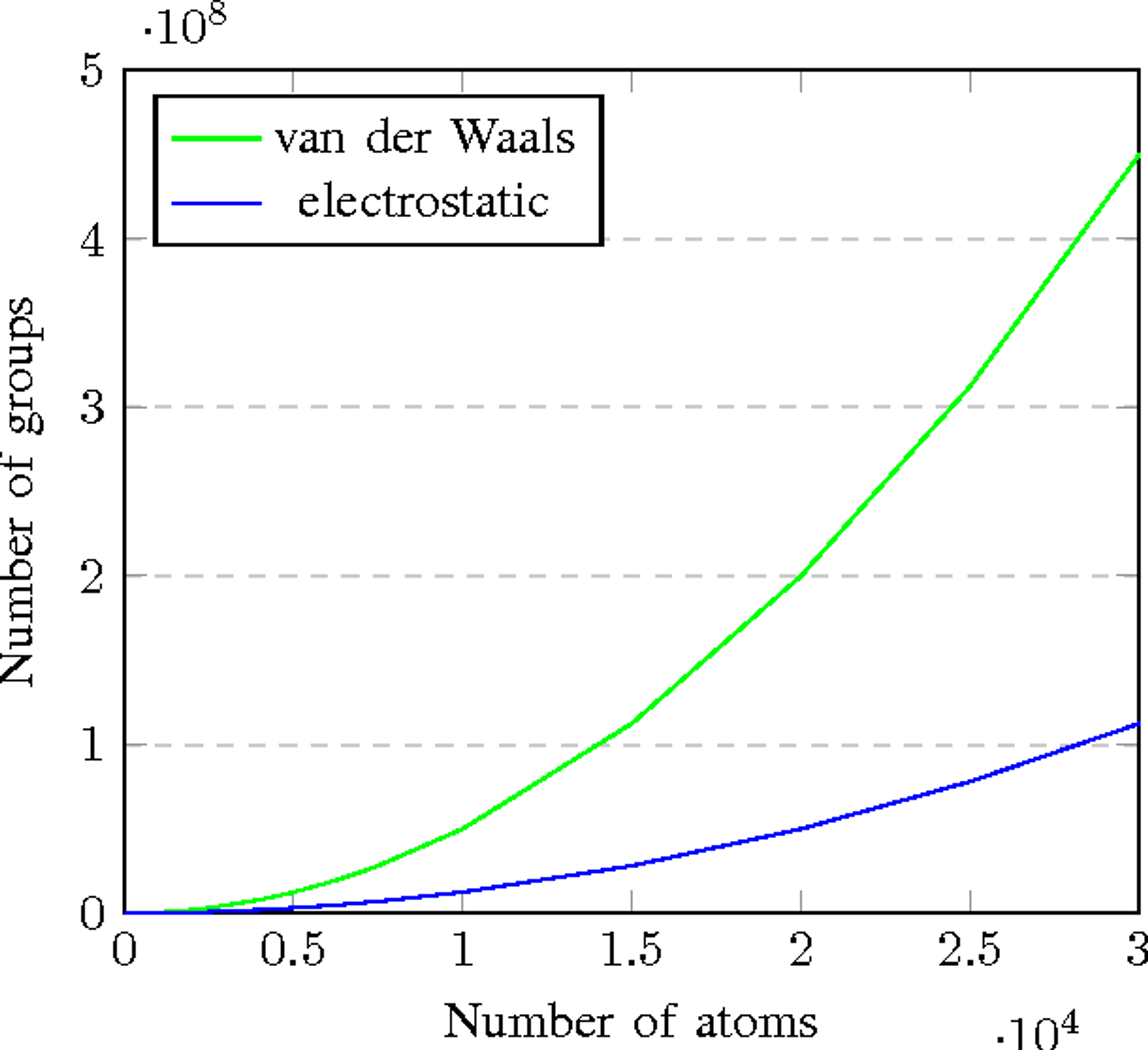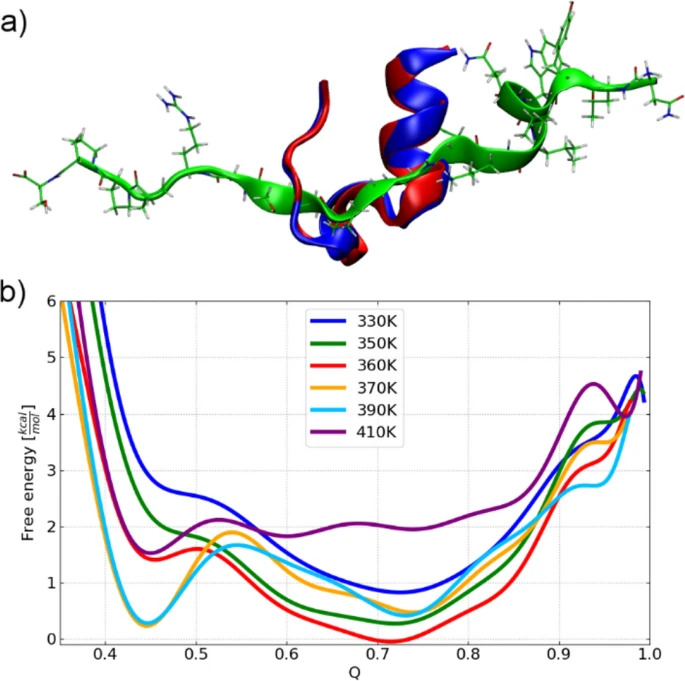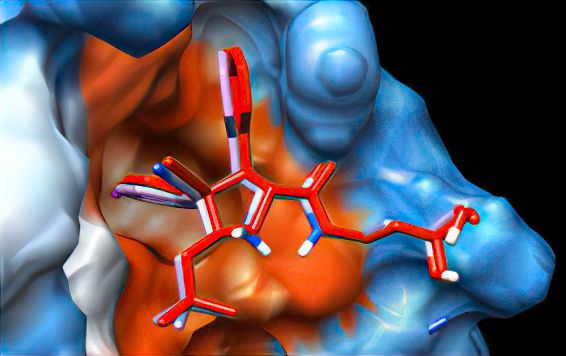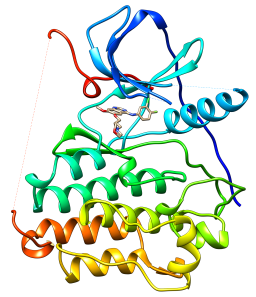This is the incredible realm of molecular simulations, where we unlock the secrets of life at the atomic level using GPU. Have you ever imagined zooming into a world that is invisible to the naked eye?
A world where proteins twist and fold like microscopic ballet dancers and enzymes, which are life’s tiny engines. Also, churning out molecules that keep us alive?
Scientists have been studying the microscopic world for decades, using traditional computers to simulate it.
However, these slow simulations limit our understanding of the tiny actors’ performance. Therefore, it is comparable to watching paint dry.
This is where the GPU comes in – initially, to accelerate the rendering of video games. Later, it revolutionized how we study microscopic ballet.
GPUs are highly efficient parallel processing units consisting of thousands of cores that work together to perform complex computations simultaneously.
Tasks that would take traditional computers days to complete can be done in minutes or seconds. All because of the help of GPUs.
The difference in speed is like upgrading from a bicycle to a spaceship, propelling us toward a greater understanding of the mysteries of life. The newfound speed is not just a matter of bragging rights. It opens up new possibilities for scientific research.
For instance, it allows us to observe proteins folding and unfolding in real-time. Hence, it helps us understand how they transform from a disordered state to a perfectly functioning machine. We can also simulate enzyme-substrate interactions. Therefore, it can be essential to drug discovery to develop drugs that target specific diseases with great accuracy.
Additionally, we can investigate the intricate machinery of microbes. So, it can provide valuable insights into developing new antibiotics, biofuels, and even solutions to climate change.
SeiMaxim offers GPU servers featuring top-tier NVIDIA Ampere A100, RTX A6000 ADA, GeForce RTX 3090, and GeForce RTX 1080Ti cards.
Bridging the Gap: From Atoms to Function with Molecular Simulations
Molecular dynamics simulations reveal the secrets of atoms’ intricate dance.
Proteins, the workhorses of life, can be considered microscopic acrobats. Their precise folds and movements determine their function, whether they transport oxygen through your bloodstream or build the muscles you use to smile.
However, these movements are not visible to the naked eye. They occur at the atomic level, where tiny actors – the atoms themselves – interact in a complex ballet.
Molecular dynamics simulations, powered by the parallel processing magic of GPUs, are revolutionizing our understanding of life.
We can now go beyond merely observing the final performance and delve into the intricate details of molecular movements.
Enter the GPU, an often-overlooked hero of the computer world.
Initially, this powerhouse holds a secret weapon for accelerating video games: parallel processing.
Instead of relying on a single camera to capture the protein’s dance, thousands can now capture it simultaneously from different angles.
This allows the GPU to process data exponentially faster, reducing years of computations into minutes or seconds.
This speed boost is more than just a technical marvel. The missing piece allows us to bridge the gap from atoms to function. Therefore, we can now watch proteins fold and unfold in real time.
Also, we can witness enzymes break down molecules and observe the intricate machinery of life in motion.
What are biomolecules, and why do their motions matter?
Biomolecules are the building blocks of life, responsible for bodily processes. Organic molecules, such as proteins, carbohydrates, lipids, and nucleic acids, are responsible for powering life.
Each biomolecule has a unique structure, with complex folding and interactions.
Biomolecules are dynamic entities whose motions are essential for life. Therefore, by delving into the world of biomolecular motions.
We unlock the secrets of life’s processes, paving the way for a deeper understanding of health, disease, and the future of medicine.
The Limits of Traditional CPU-based Simulations
The advancement of our understanding of biomolecule behavior has relied heavily on traditional CPU-based simulations.
However, the efficacy of these simulations is beginning to reach its limits due to several key factors. As such, it is crucial to acknowledge and address these limitations to continue progressing.
In particular, the limitations of traditional CPU-based simulations are attributed to several factors.
These include the increasing complexity of biomolecular systems and the high computational cost of simulating them.
Here’s a general estimate of computational costs for different biomolecular systems on a CPU:
| System | CPU hours | Estimated cost |
|---|---|---|
| Small protein (100 amino acids) | 10,000 – 100,000 | $40 – $400 |
| Protein-protein interaction | 100,000 – 1,000,000 | $400 – $4,000 |
| Membrane protein | 1,000,000 – 10,000,000 | $4,000 – $40,000 |
| Cellular Complex | 10,000,000 – 100,000,000 | $40,000 – $400,000 |
Moreover, there are limitations of current hardware and software technologies.
As such, these factors present significant challenges to researchers seeking more profound insights into biomolecule behavior.
It is, therefore, necessary to explore alternative approaches that can overcome the limitations of traditional CPU-based simulations.
Use specialized hardware or more efficient algorithms to optimize existing resources.
It may also be necessary to consider using novel computational methods to generate more accurate and realistic simulations of biomolecular systems.
Traditional CPU-based simulations have helped us understand biomolecule behavior, but they are reaching their limits. To progress, address limitations, and explore alternative approaches for better simulations.
Unleashing the Potential: GPUs Turbocharge Biomolecule Simulations
GPU technology has revolutionized biomolecule simulations by surpassing the limitations of traditional CPU-based methods.
Demystifying the GPU architecture: Cores, memory, and parallel magic
CPUs are suitable for general computing, while GPUs are great at parallel processing. Moreover, it makes them perfect for speeding up biomolecule simulations.
Let’s explore the key components that make GPUs so powerful.
1. Cores:
- Unlike CPUs, which typically have a few cores dedicated to sequential processing, GPUs boast thousands of smaller cores. These cores are specifically designed for parallel processing. Hence, they can handle multiple tasks simultaneously.
2. Memory:
- GPUs have dedicated global memory space separate from the CPU’s main memory. This enables faster data access and transfer during simulations, which is crucial for efficient processing.
Shared Memory:
- In addition to global memory, GPUs have smaller shared memory spaces. Therefore, it is accessible to a specific group of cores for rapid communication and data exchange within the same task.
4. Cache Memory:
- GPUs employ cache memory, similar to CPUs, to store frequently accessed data for faster retrieval. Hence, This reduces processing time and improves simulation performance.
5. Thread Processors:
- GPUs use specialized thread processors to manage. Moreover, schedule the execution of thousands of lightweight work units assigned to individual cores.
Mapping Molecular Interactions to GPU Strengths
Mapping molecular interactions to GPU strengths could unlock vast biomolecular research possibilities, as described in the following.
Force Field Calculations
- Force fields are the mathematical models that describe the interactions between atoms within a biomolecule. Calculating these forces is computationally expensive. Moreover, it requires repetitive calculations for each atom pair.
- GPUs excel at this task due to their parallel architecture. Thousands of cores can simultaneously calculate the forces between atom pairs.
- Hence, it dramatically accelerates force field calculations and simulation speed.
Non-bonded Interactions
It includes electrostatic and van der Waals forces, which are crucial for understanding biomolecule behavior.
These interactions are often long-range. Therefore, it requires calculations across large distances within the molecule.

As shown in Figure 4, GPUs excel at these calculations. It is all because their shared memory allows efficient data sharing between cores working on different molecule parts.
This ensures accurate and rapid calculations of non-bonded interactions.
Conformational Sampling
Understanding a biomolecule’s different conformations (shapes) can be essential for elucidating its function.

Therefore, Traditional methods for sampling these conformations are often time-consuming.
As shown in the figure. 5, GPUs can accelerate this process by simultaneously simulating numerous conformations.
Hence, This allows researchers to explore the conformational landscape of a biomolecule in more detail and identify potential functional states.
Molecular Docking

It is a simulation process that predicts how small molecules bind to larger biomolecules, such as enzymes.
This process is crucial for drug discovery and development.
Parallelizing calculations evaluating binding energies and affinities between molecules accelerates docking simulations.
Therefore, this allows faster screening and optimization of drug candidates’ binding properties.
Free Energy Calculations
Free energy calculations determine the thermodynamic stability of different biomolecule conformations and predict the direction of spontaneous processes.
These calculations require extensive sampling and integration, making them computationally demanding.
GPUs can significantly reduce the time required for free energy calculations. Hence, it enables researchers to study the thermodynamics of biomolecular systems more efficiently.
Simulating enzyme-substrate interactions for drug discovery

GPU-powered simulations of enzyme-substrate interactions are transforming the field of drug discovery. Therefore, This technology provides a more comprehensive understanding of enzyme function and accelerates drug development.
Moreover, it is also enhancing the potential to improve human health and well-being.
The potential for discovering life-saving drugs and developing personalized patient treatments rapidly increases as GPUs evolve.
Rational Drug Design
Unlike traditional hit-and-miss methods, GPU-powered simulations enable rational drug design by analyzing the interactions between a potential drug candidate and the target enzyme.
Therefore, we can predict its effectiveness and optimize its structure for improved binding affinity and reduced side effects. Popular GPUs for Rational Drug Design:
| GPU Model | Performance | Memory Bandwidth | Memory Capacity | Cost | Strengths | Weaknesses |
|---|---|---|---|---|---|---|
| NVIDIA GeForce RTX 3090 | High | High | 24GB | High | Powerful, large memory capacity | Expensive, high power consumption |
| NVIDIA Tesla V100 | Very High | Very High | Up to 32GB | Very High | Excellent performance, high memory capacity | Expensive, limited accessibility |
| AMD Radeon Pro W6800X | High | High | 16GB | Moderate | Strong performance, lower cost than RTX 3090 | Less mature software support |
| Google Cloud TPUs | High | N/A | N/A | Moderate | Cost-effective, readily available | Not technically GPUs, limited to specific tasks |
| Amazon EC2 Spot Instances | Variable | Variable | Variable | Low | Affordable, flexible access | Unpredictable availability, pricing |
Personalized Medicine
Differences in enzyme structures among individuals can result in varying reactions to medications.
Using GPU simulations, medical professionals can create drug treatments customized to each patient’s genetic makeup.
Therefore, This approach allows for personalized medicine, which can be more effective and less likely to cause adverse side effects.
You can visit the following article to learn about GPU’s role in drug discovery and which GPU is best.
Identifying New Drug Targets
Exploring the vast network of enzymes within our cells can help us identify new targets for drug development.
This, in turn, enables us to address previously untreatable diseases and develop novel therapies for unmet medical needs.
Reducing Drug Development Costs
Traditional drug development is a lengthy and expensive process. GPU-powered simulations can significantly reduce the time and cost of drug development.
Hence, It performs this task by accelerating the identification and optimization of promising drug candidates.
Pushing the Boundaries of Molecular Simulations with GPU
Despite significant progress with GPUs, biomolecular research still faces computational challenges. As biomolecular systems become larger and more complex.
Biological processes often involve multiple interacting molecules and pathways. Therefore, this makes them difficult to model and understand.
Artificial Intelligence (AI) can utilize vast data from simulated and real-world experiments to analyze and improve force fields.
This means that AI can explore and make sense of complex data sets that would be challenging for humans to process manually.
By doing so, AI can identify patterns, correlations, and other factors that influence the behavior of particles in a system. AI can then use this information to refine force fields and improve the accuracy of simulations.
This, in turn, leads to more realistic and reliable simulations, which can be used in a wide range of applications, from drug discovery to materials science.
ML algorithms can analyze large datasets from simulations and experiments. Therefore, it reveals patterns and insights that would be difficult to detect manually.
Deep learning models can accurately predict the 3D structure of proteins. Hence, it is crucial for drug design and understanding their function.
Future Challenges of Molecular Simulations Using GPUs
While GPUs have revolutionized biomolecular research, they still face challenges that need to be addressed to ensure continued progress:
Hardware limitations:
Current GPUs are powerful but have limitations regarding memory bandwidth, computational power, and energy efficiency.
As simulation complexity increases, new hardware architectures will be necessary.
Software development:
Current software tools for biomolecular simulations need further optimization to harness the full potential of GPUs.
Therefore, this includes improving parallelization, developing new algorithms, and creating user-friendly interfaces.
Integration with other computational tools:
Biomolecular simulations often require integrating AI and machine learning algorithms to gain deeper insights.
Seamless interfaces and data exchange protocols are crucial for such integration.
Ethical considerations:
As biomolecular simulations become more powerful. Therefore, ethical considerations regarding data privacy, intellectual property, and potential misuse of technology must be addressed.
Integration with experimental data:
Combining data from molecular simulations with experimental results is crucial for validating models and ensuring accuracy.
Hence, robust data integration and analysis methods are essential for understanding biological systems.
Addressing specific biological challenges:
Different areas of biomolecular research pose unique challenges. Specialized algorithms and computational techniques are required to simulate membrane proteins or large cellular systems.
Conclusion
The fusion of GPUs, AI, and machine learning is revolutionizing biomolecular research.
This formidable alliance is helping us to surmount existing obstacles, amplify simulations, and confront intricate biological systems.
This unlocks promising avenues in drug development, customized healthcare, and a more profound comprehension of existence.
This article has explored how GPUs can be harnessed for molecular and structural simulations.
From accelerating force field calculations and analyzing non-bonded interactions to simulating protein folding and probing the intricate details of microbial machinery.
Hence, GPUs are invaluable tools for advancing our understanding of life’s fundamental processes.
Although GPUs have opened up incredible opportunities, some challenges must be addressed.
Some hurdles are coping with ever-increasing complexity when scaling with intricate biological systems and integrating computational tools with experimental data.
To tackle these challenges, continued advancements in hardware, software, and workforce development are required.
This will ensure that the full potential of GPU-powered simulations can be realized.
Looking towards the future, it is evident that GPUs have become an essential tool for molecular and structural simulations.
Their capability to unlock the secrets hidden within the dance of biomolecules holds excellent promise to push us forward to comprehend life.
Moreover, it helps develop life-saving drugs and creates a healthier world.
By embracing this new era of computational power, we can embark on a journey of discovery that will undoubtedly rewrite the script of biological sciences.